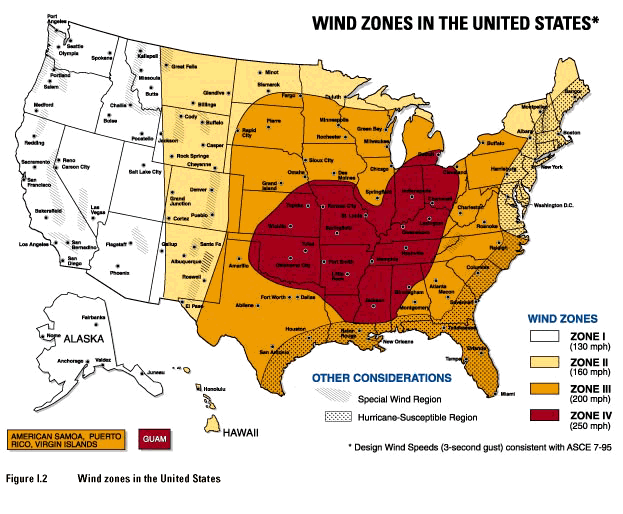
"There are not as many changes for them as for manufacturers that were building a low-end product."Įveryone agrees the new standards will make mobile homes safer.
#Mobile home wind zone code#
"A lot of manufacturers were far exceeding the requirements in the code now," said Orville Cummings, assistant chief of Florida's Bureau of Mobile Homes and Recreational Vehicle Construction, which inspects mobile-home construction for HUD. (See the graphic on -D for examples of how one manufacturer is changing his product.) There essentially is no difference between a home designed to withstand 100-mph winds and one designed for 110 mph, manufacturers say. Manufacturers likely will increase the number of fasteners, strengthen walls and corners, and attach roofing materials more snugly. That means that there's no standard master list of building techniques against which consumers can check the home they're thinking of buying. HUD must approve each manufacturer's plans. HUD says the homes must withstand certain wind levels, and the ways the requirement is satisfied may vary from manufacturer to manufacturer. The new requirements strengthen manufactured homes' walls, roofs and fastenings. HUD Secretary Henry Cisneros said in a statement, "We think this rule strikes the right balance" between safety and affordability. HUD, on the other hand, defends the new regulations. And they say some of the new requirements are unclear. They fear those price increases will make them less competitive with site-built housing. The manufacturers say the new standards will raise prices, eliminating mobile homes as a major source of low-cost housing. Manufacturers say they are being asked to meet higher standards than site-built housing, a claim the Florida Home Builders Association disputes. The manufactured-housing industry is challenging the new standards in court. She called the new standards for manufactured housing "a vast departure from the traditional way they've built those structures." Most site-built, or conventional, homes in Florida must withstand winds of 100 mph, based on building codes, although that figure could be higher or lower, depending on where they're located, said Mary Kathryn Smith, project manager for the state Department of Community Affairs.

Until now, mobile homes had to withstand winds of roughly 70 to 90 mph. The rules apply only to homes that enter production starting Wednesday. The rest of the nation will be designated as Wind Zone I, where manufactured housing must meet a wind standard of 60 mph. New manufactured housing in the rest of Florida, and in many coastal areas from Texas to Maine, must withstand 100 mph winds. Under the new regulations, those counties will be designated as Wind Zone III. (Also considered coastal zones are Broward, Charlotte, Collier, Dade, Franklin, Gulf, Hendry, Lee, Martin, Monroe and Palm Beach counties. New manufactured housing in coastal zones _ including Pinellas, Manatee and Sarasota counties _ must withstand winds of 110 mph. The standards, which go into effect Wednesday, require the following:


 0 kommentar(er)
0 kommentar(er)
